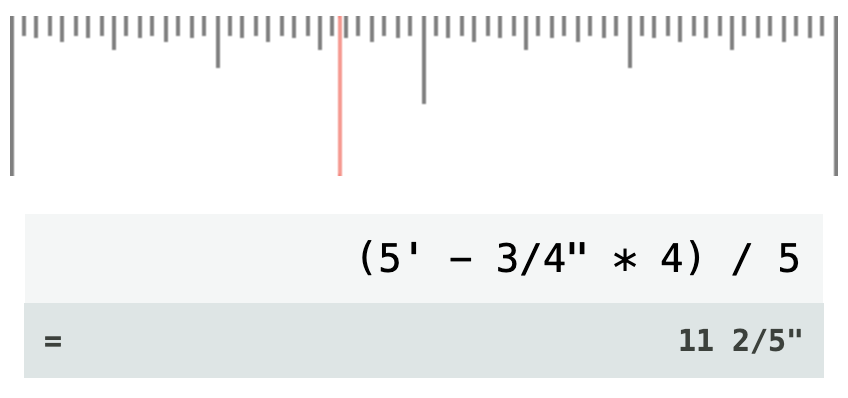Woodworking Calculator
Raison d'être
In the USA and other uncivilized countries, woodworkers measure distances in units of furlongs, hands, barleycorns, and even inches1. Converting between units is tedious and many extra steps are required when using a calculator.
Consider building a bookcase with three evenly spaced shelves. The interior height of the bookcase is 5' and each shelf is 3/4" thick. How much space is needed between shelves? Depending on how well you remember the order of operations from gradeschool, you might enter some variation of this into a calculator:
((5 * 12) - ((3/4) * 3)) / 4
To which your calculator will helpfully output
14.4375
I don't know about you, but I don't remember where 14.4375 is on my tape measure, so I'd also probably end up calculating
(14.4375 - 14) / (1/16)
to figure out that my solution is 14 7/16".
Want to add another shelf? You'll have to do a few more steps if you want to approximate 11 2/5" to the nearest 32nd or 64th inch.
Input
You can type feet and inches into this calculator:
5' 4 3/4"
means five feet, four and 3/4 inches. If you don't specify a unit, inches are assumed, so
17 5/8
means seventeen and 5/8 inches.
So, to figure out our shelf spacing from the example above, I can enter
(5' - 3/4" * 3) / 4
and the calculator will tell me
14 7/16"
Output
The calculator will output the result in whole and fractional inches. Double clicking on the result will toggle showing feet. The last inch of the result is also displayed on a ruler, allowing you to quickly see that 2/5 is close to 13/32
